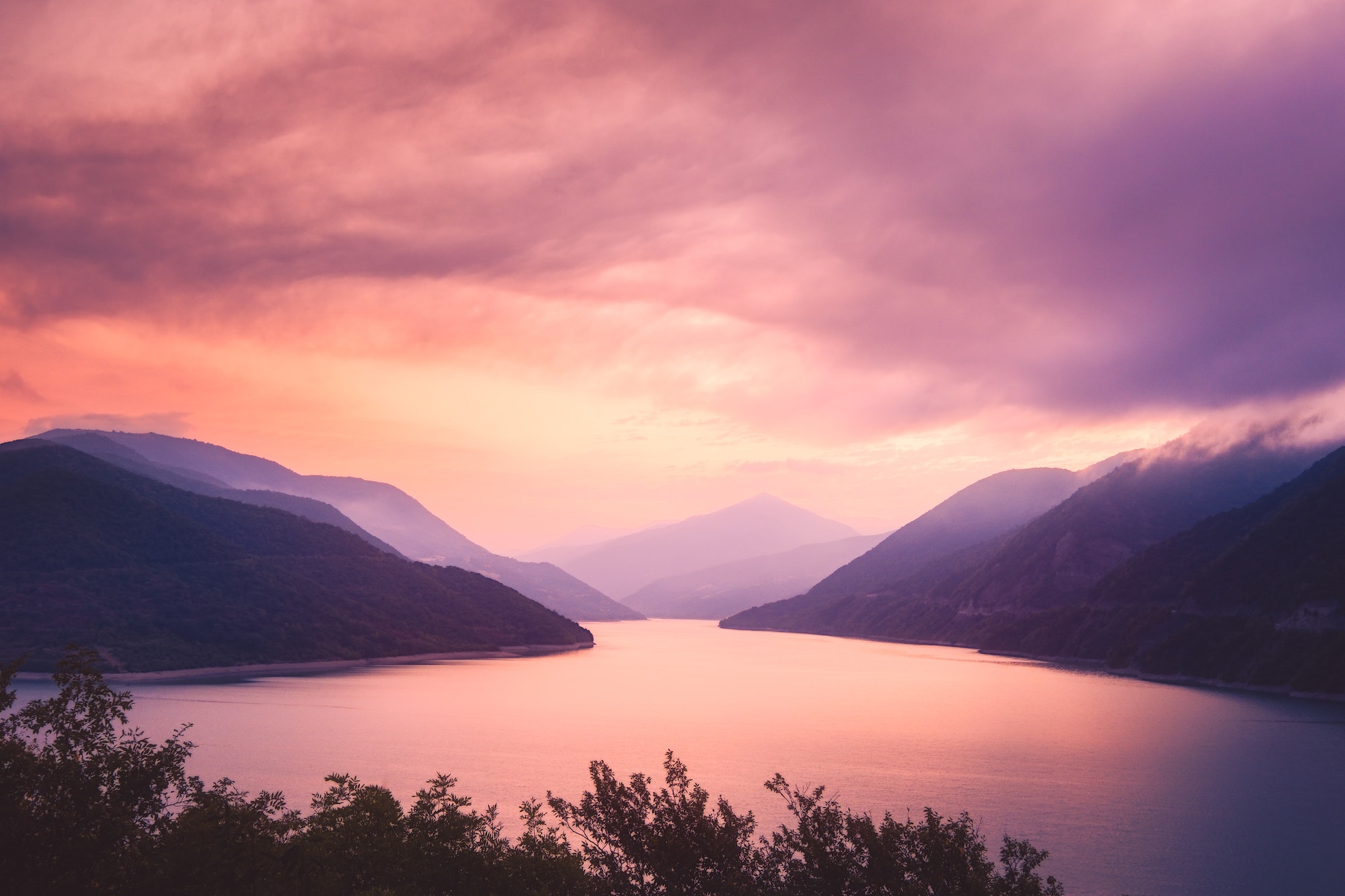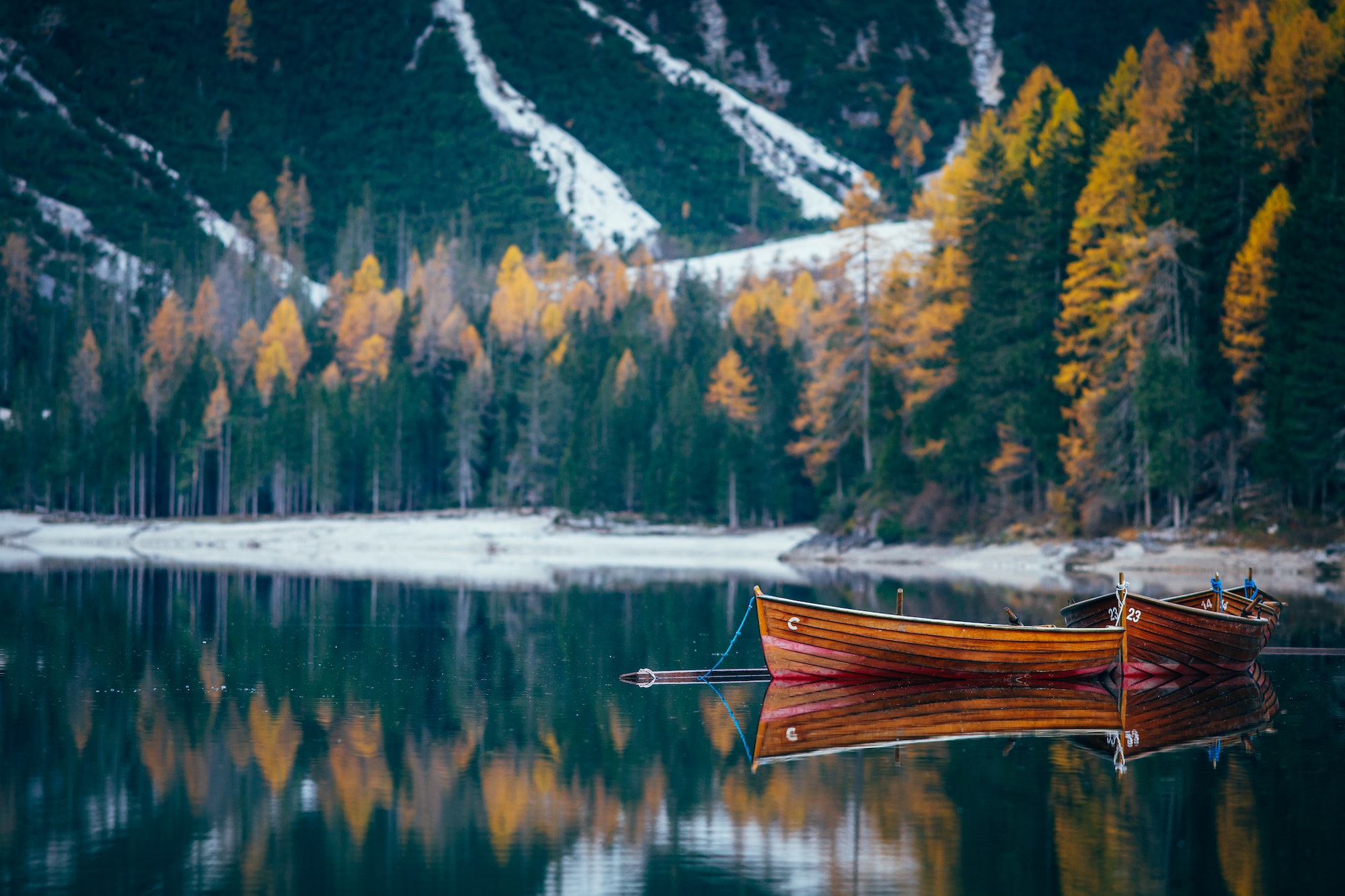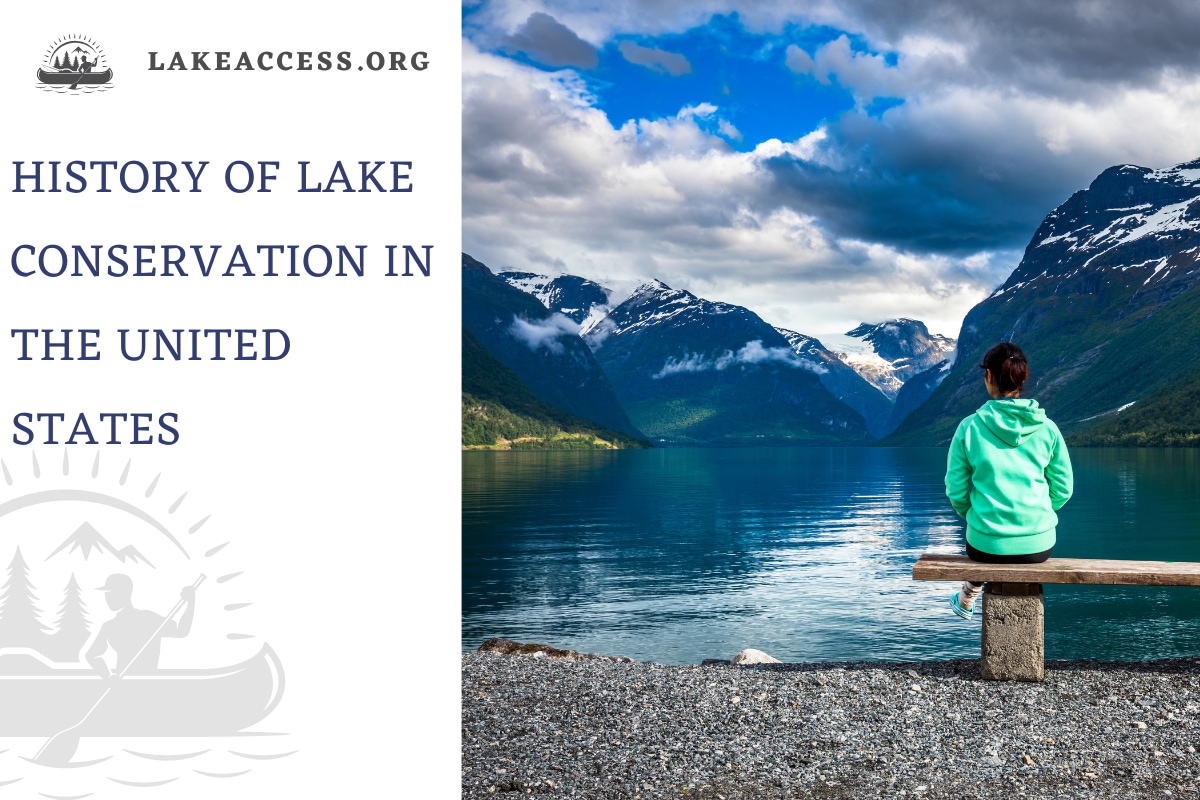Few people know the history of lake conservation in the United States. Lakes have been around for millennia, and so has the need to protect them.
The first recorded instance of lake conservation dates back to 1873 when New York State created a commission to protect Niagara Falls. This was followed by the creation of Yellowstone National Park in 1872 and Yosemite National Park in 1890.
These early preservation efforts gave rise to the modern environmental movement, which led to the passage of landmark legislation like the Clean Water Act and the Endangered Species Act. Today, lake conservation is a top priority for state and federal agencies, as well as for NGOs and private citizens. These efforts make lakes across the country healthier than they have been in decades.
What is conservation?
Conservation is the act of consciously and efficiently using land and its natural resources. In the United States, conservation is often associated with the preservation movement, which began in the late 1800s. The goal of this movement was to protect land and its resources from development and exploitation.
The history of lake conservation in the United States
Early conservation movement
The early conservation movement in the United States was a movement to protect natural resources and preserve wilderness for future generations. It began in the 19th century, with artists like Albert Bierstadt painting powerful landscapes of the American West and writers like Henry David Thoreau romanticizing nature in their works. The movement was also influenced by observations of Native Americans’ reverence for nature and sportsmen who condemned European hunters’ treatment of wildlife. Finally, John Muir’s efforts to establish the Sierra Club helped promote awareness of the importance of preserving natural resources for sustained yield harvesting.
The movement led to increased awareness about the importance of preserving natural resources, which had a direct impact on lake conservation efforts. By recognizing that all lakes are interconnected through ecosystems and water cycles, early Americans created laws protecting these precious resources from being overexploited or contaminated by industrial activities like mining or logging operations.
Great Lakes Preservation efforts
In the mid-1800s, efforts were made to preserve the Great Lakes’ ecosystem. Scientists and ecologists began to study ecosystems to gain a theoretical understanding based on particular studies. By 1972, Stan Smith was so pessimistic about the overall situation that he entitled one paper, “Destruction of the Ecosystem in the Great Lakes and Possibilities for Its Reconstruction.” Henry Regier also advocated for restoring favorable and productive fish populations to restore balance to the ecosystem.
In 1977, GLFC asked its Science Advisory Committee (SAC) to examine ways to rehabilitate Great Lakes ecosystems; later that year, an international report on Rehabilitating Great Lakes Ecosystems was published by seven fishery biologists from around the world. In 1988 political science professor Lynton Caldwell edited nine papers on Perspectives on Ecosystem Management for the Great Lakes; only two papers addressed ecological aspects of government management.

What are the benefits of conservation?
Protection for wildlife habitats and species
Conservation increases the protection of wildlife habitats and species by focusing on agriculture, biodiversity, open space, rare or threatened species, water, and wetlands. It also seeks to preserve wildlife such as birds, mammals, and insects.
This helps to prevent the extinction of species and protect vital natural resources such as water supplies that are important for wildlife survival. Conservation efforts also help ensure that ecosystems remain healthy while reducing the impact of human activities on them.
More excellent protection of natural resources
Conservation increases the protection of natural resources by providing new techniques and technologies for both reducing the amount of water being used and increasing its efficiency, as well as protecting agricultural land from being over-consumed. This helps slow the gradual depletion of these key resources while ensuring that populations have enough food to survive.
Improved water quality and reduced pollution
Conservation helps improve water quality and reduce pollution by reducing waste released into waterways. We can reduce the pollutants in our lakes and rivers by preserving wetlands, protecting wildlife habitats, and minimizing agricultural runoff. By reducing or eliminating sources of pollution such as pesticides, PCBs, and heavy metals such as mercury, we can help ensure that our waterways remain clean for generations to come.
Improved health of lakes and rivers
Conservation can help improve the health of lakes and rivers by reducing pollution, restoring fish populations, and improving land use in the surrounding watershed. By eliminating sources of physical, chemical, and biological pollution entering lakes, decreasing fishing pressure on vulnerable species such as piscivores (fish that eat other fish), and restoring favorable conditions for fish populations to thrive again in a given area, conservation efforts can help restore balance to ecosystems. This will ensure that humans and wildlife can benefit from clean water resources for generations.
Improved safety for recreation and fishing
Conservation of vital natural and cultural resources helps to protect the ecosystems of lakes, rivers, and oceans. This can improve recreation and fishing safety by reducing the risks associated with pollution, marine invaders such as sea lampreys, overfishing, and other threats to marine ecosystems.
By protecting natural resources such as fish populations in lakes or prawns in rivers, conservation efforts can help ensure that there are enough fish for recreational purposes while also ensuring their long-term sustainability. Additionally, by reducing water pollution levels and limiting invasive species from entering these ecosystems, conservation efforts can help reduce the risk of illness associated with swimming or eating seafood caught in contaminated waters.
Increased knowledge of environmental science
Conservation increases knowledge of environmental science by providing opportunities for researchers to study the effects of human activity on wildlife and ecosystems. Through this research, scientists can better understand how humans impact the environment and identify ways to mitigate these effects. This increased knowledge can then be used to develop more sustainable practices that help preserve wildlife, habitats, and ecosystems for future generations.
Increased community cohesion and well-being
One of the benefits of conservation is increased community cohesion and well-being. People who work together to protect their local environment develop a stronger sense of community pride and ownership. This can lead to increased social interactions and improved mental health outcomes. In addition, conservation can provide opportunities for physical activity, which has numerous benefits for overall health and well-being.
Economic benefits
Conservation contributes to the economy by providing economic incentives to protect fragile ecosystems and lands. Tourism provides an essential source of revenue for conservationists, as it incentivizes them to preserve valuable natural and cultural resources for visitors’ enjoyment.
By partnering with ecotourists, environmentalists can take advantage of this financial incentive while still delivering their conservation message. Additionally, tourism can create jobs in remote areas where there may not be any other opportunities available. By providing these economic benefits, ecotourism ensures that fragile ecosystems are correctly maintained while also providing an economic boost to local communities across the globe.
Reduced risk of natural disasters
Conservation of natural and cultural resources reduces the risk of natural disasters such as floods and wildfires. By protecting land, wildlife habitats, wetlands, and forests, we reduce the impact of environmental changes that can lead to increased flooding or more severe wildfires. Additionally, by preserving vital resources such as water sources and vegetation coverings for protection against natural disasters, we can also ensure these resources remain available in the event of a disaster.
Reduced carbon emissions
Conservation helps reduce carbon and greenhouse gas emissions by creating eco-friendly land management practices. These practices include reforestation projects, which serve as natural filters of agricultural fertilizers and create new wildlife habitats.
By creating these sustainable land management methods, Conservationists can reduce carbon emissions while also contributing to the local economy by distributing hunting leases during the years between harvests.

What are the challenges of conservation in the United States?
Lack of awareness of conservation among the general population
The lack of awareness among the general population can affect conservation in the United States because it prevents people from understanding the importance of natural and cultural resources. This leads to a lack of support for environmental initiatives, resulting in fewer resources allocated toward protecting vital natural and cultural resources.
Lack of funding for conservation projects
The lack of funding for conservation projects in the United States is a problem because it limits the ability of organizations to protect vital natural and cultural resources. Without sufficient funding, organizations cannot fund research, implement programs, or provide financial assistance to individuals who want to volunteer their time or resources. Additionally, without enough funding for conservation projects, the U.S. could lose valuable ecosystems and species essential for maintaining a healthy environment.
Unsustainable use of natural resources
The unsustainable use of natural resources refers to the excessive consumption of natural resources such as water and land that is faster than they can be replenished. This has created a need for greater conservation efforts to ensure the survival of humans and animals that depend on these resources.
Unbalanced development of land and communities
The challenge of conservation in the United States is the unbalanced development of land and communities. When one area is developed, other areas are left behind. This can result in a patchwork of development that is not sustainable in the long term. A balance must be struck between development and preservation to achieve true conservation.
Pollution of natural resources
The increased consumption of natural resources, such as water and land for agriculture, has led to the need for greater conservation efforts to mitigate the effects of pollution.
The result is that these vital resources are being depleted faster than they can be replenished, causing challenges for those trying to conserve them. Additionally, new technologies and techniques have been developed in an effort to reduce consumption and increase efficiency.
Lack of cooperation between private and public entities
The lack of cooperation between private and public entities in the United States is a challenge for conservation. Public entities such as state and federal governments often lack the funding or resources to enforce regulations effectively. Many private landowners do not view themselves as part of the conservation effort, leading to less effective protection of natural resources on their land.
As a result, many species that depend on habitats found on private lands are at risk of extinction because they do not have adequate protection from threats such as logging and development. Furthermore, environmental degradation can often go unchecked without proper enforcement of regulations by public entities, resulting in further ecosystem damage that negatively impacts wildlife populations dependent on these habitats.

FAQs
How can we promote lake conservation in the United States?
One way to promote lake conservation in the United States is through education and awareness. Many people are not aware of the importance of lakes and their role in supporting wildlife populations. By increasing public awareness of the importance of lakes, we can encourage people to be more conscientious about their impact on these ecosystems.
Another way to promote lake conservation is through legislation and regulation. In the United States, the Clean Water Act (CWA) is the primary federal law that protects our nation’s waters. The CWA establishes regulations for pollution control and sets water quality standards. States also have their own laws and regulations to protect their waters.
What are the main goals of lake conservation?
The main goals of lake conservation are to provide assistance and encouragement to state governments in the conservation and management of lakes; protect water resources; promote environmental sustainability; improve recreational opportunities for local communities; preserve cultural heritage sites and landscapes; conserve natural landscapes for future generations; maintain the biodiversity of wildlife habitats; reduce pollution from waste and runoff from surrounding areas.
What are some of the efforts that have been made to conserve lake ecosystems?
Over the years, various efforts have been made to conserve lake ecosystems in the United States. In the early 1900s, the focus was on preserving lakes as natural resources for future generations. This led to the establishment of many national parks and other protected areas.
In the mid-1900s, the focus shifted to protecting lakes from pollution and other human impacts. This led to laws and regulations to clean up lakes and prevent further pollution. In recent years, the focus has shifted to conserving lakes for their ecological value. This has led to initiatives that restore and protect lake ecosystems.
What is the impact of wetland drainage on lake conservation?
One of the most significant impacts of wetland drainage on lake conservation is the loss of habitat for aquatic plants and animals. Wetlands are important breeding and nursery areas for many fish species, amphibians, and reptiles. They also provide essential stopover points for migrating birds. When wetlands are drained, these animals often lose access to the food and shelter they need to survive.
In addition to the loss of habitat, wetland drainage can also lead to the introduction of invasive species. These non-native plants and animals can outcompete native species for food and space. They can also spread disease and parasites to native populations. Invasive species are one of the leading causes of biodiversity loss in the United States.
How has wildlife conservation affected lake conservation?
The wildlife conservation movement has had a profound impact on lake conservation. Wildlife conservation seeks to protect and restore the habitats of species such as birds, fish, and mammals. By protecting these animals and their habitats, we are also helping to protect the ecosystems they rely on for survival.
Protecting wildlife species and habitats ensures that our lakes remain healthy and support diverse ecosystems with abundant plant life and wildlife populations. This helps ensure that our lakes continue providing clean water resources for generations.
How have mining, logging, and agriculture impacted lake conservation?
Mining, logging, and agriculture have all contributed to the pollution of lakes in the Great Lakes region. The mining resulted in releasing toxic chemicals into rivers and lakes, while logging led to increased erosion and loss of wetlands. Agriculture caused wetland drainage and increased agricultural runoff into rivers and lakes.
What is the role of government in lake conservation?
The role of government in lake conservation has evolved from a focus on preservation to a more holistic approach that includes protection and restoration. In the early days of lake conservation in the United States, the government’s primary role was to preserve lakes and their surrounding watersheds.
This was done through a variety of means, including the establishment of national parks and wilderness areas. More recently, however, the government has shifted its focus to include both protection and restoration. This shift is evident in the establishment of the Great Lakes Restoration Initiative, which is a multi-billion dollar effort to clean up the Great Lakes and restore their ecosystems.
What are the effects of overfishing on lake conservation?
Overfishing can harm lake conservation because it can reduce the population of fish species that are valuable for their ecological role in the lake ecosystem.
Overfishing may cause certain species to become extinct if they cannot recover quickly enough after being exploited for their resources. When fish populations are depleted, smaller piscivores such as alewife and white perch may become dominant. This can lead to changes in food webs, increased eutrophication due to algae blooms, and reduced biodiversity overall.

